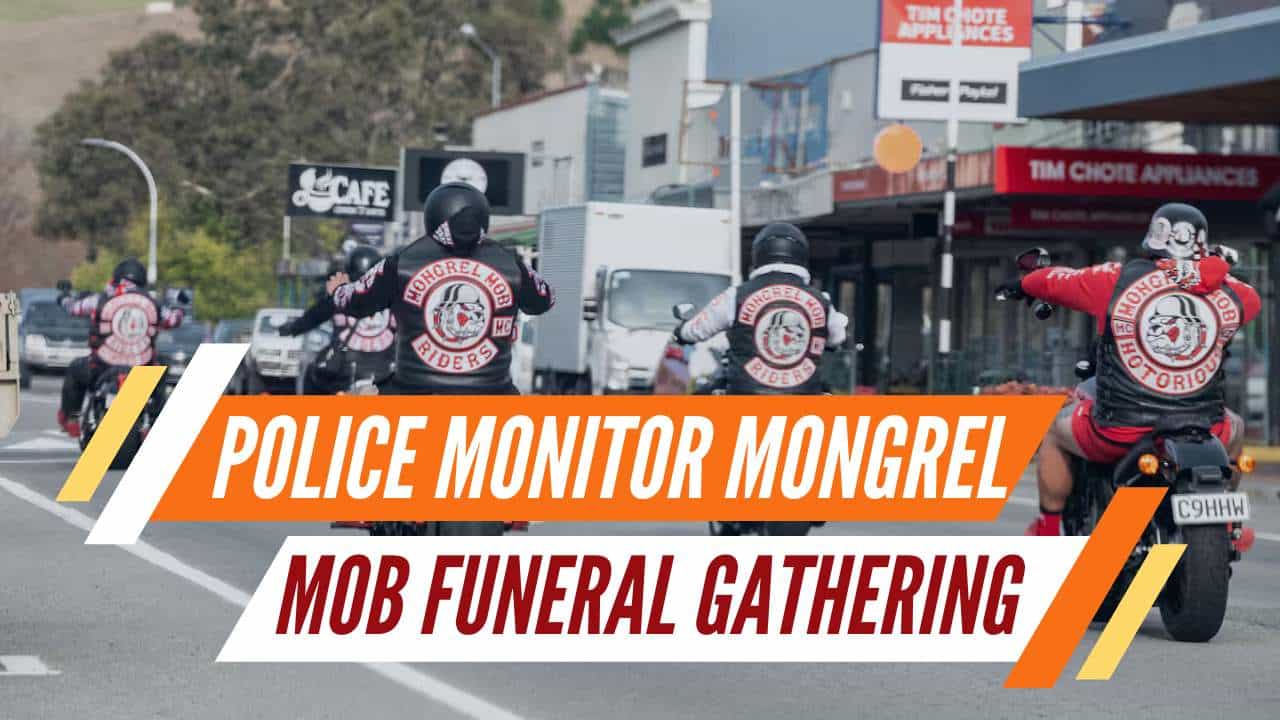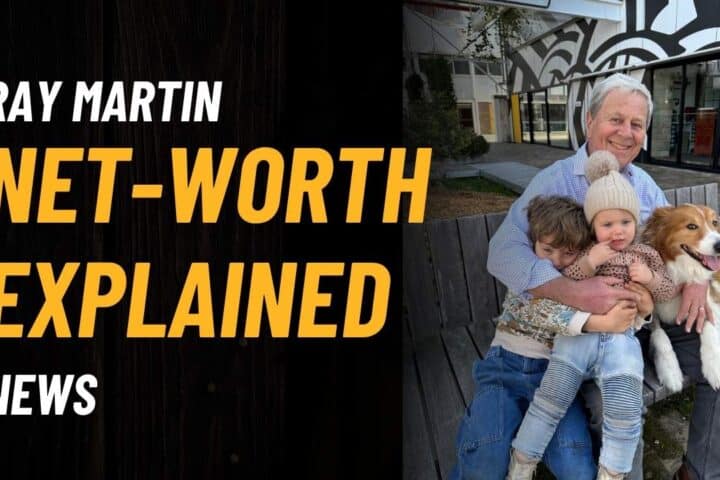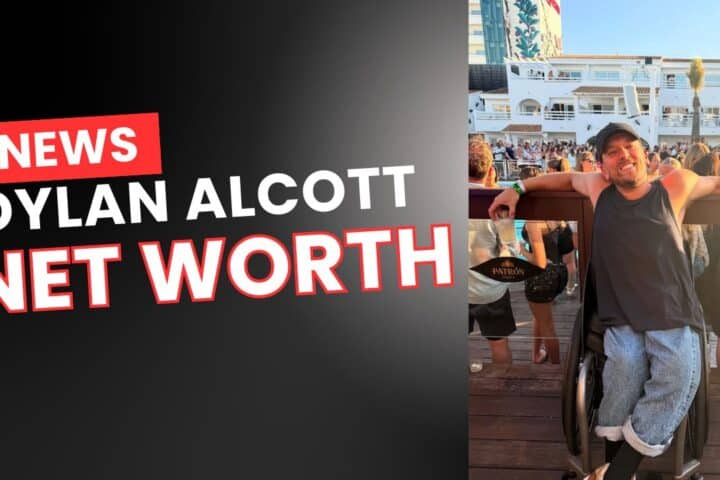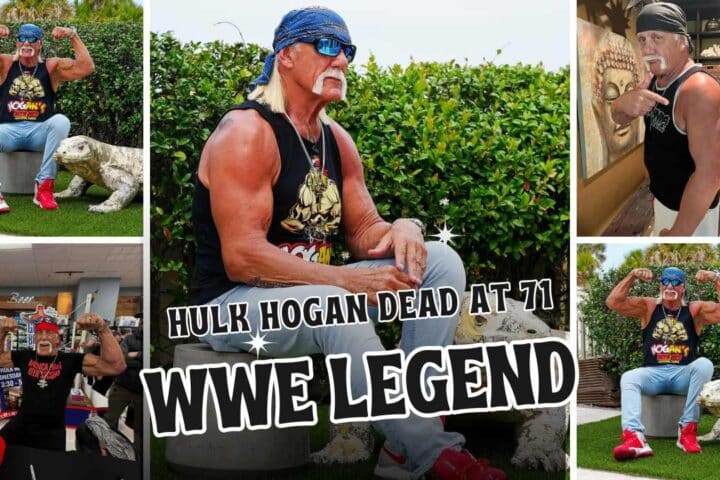Table of Contents Show
Police are preparing for a large Mongrel Mob gathering in Napier this week as members from across the country travel to attend the tangi (funeral) of well‑known leader Angus “Heil Dogg” Benson.
Officers have set up checkpoints and increased patrols as part of their plan to keep the peace during what is expected to be one of the biggest gang gatherings in recent years.
Authorities have confirmed that Mongrel Mob members will attend Angus Benson’s tangi in Napier, New Zealand, despite the Gangs Act 2024, which makes it illegal to display a Mongrel Mob patch in public.
This law has been in effect since late last year and carries fines or even jail time.
“We respect the whānau and the need to grieve, but we will enforce the law,”
said Eastern District Commander Inspector Marty James in a statement to Radio New Zealand last month when asked about the upcoming tangi.
Who are the Mongrel Mob?
The Mongrel Mob NZ is the largest and most recognised gang in the country. With more than thirty chapters operating across New Zealand and others in Australia and Canada, the gang has built a reputation that reaches far beyond Hawke’s Bay.
The Mob’s patch is instantly recognisable: a red and black emblem featuring a bulldog wearing a German helmet. According to a 2018 photo essay by John Rotman titled Mongrelism:
The Mighty Mongrel Mob Nation of Aotearoa New Zealand, these symbols are designed to shock and set the gang apart from mainstream society.
Many members also wear red bandannas and have tattoos of the bulldog or gang name on their faces and bodies.
How the Mob Began and Who Leads It?
Who started the Mongrel Mob?
The group began in the early 1960s when a judge in Hastings reportedly called a group of young offenders “mongrels.”
Rather than be insulted, the group embraced the term, sewing the name onto patches and creating their own identity. By the late 1960s, chapters were forming in Wellington and Hawke’s Bay.
Who is the leader of the Mongrel Mob today?
The gang does not have one national boss. Each chapter has its own leadership, usually with a president or captain. Angus Benson was the head of the Mongrel Mob Barbarians in Napier. In a 2022 podcast interview on Under the Patch, Benson spoke about brotherhood within the Mob:
“This isn’t just a gang, it’s our family. We stand together, especially when we lose one of our own.”
How Many Mongrel Mob Members Are There?
Police intelligence and academic studies estimate that over 1,000 patched members belong to the Mongrel Mob in New Zealand, with several thousand more prospects and associates.
In 2013, official prison records showed that 934 Mongrel Mob members were behind bars, making up more than 10% of the country’s prison population at that time.
A Long and Often Violent History
The Mob’s history is marked by high‑profile clashes and police operations.
- In the 2000s, Operation Crusade targeted drug sales by the Christchurch chapter, leading to dozens of arrests.
- In 2017, Operation Walnut exposed a meth supply ring, resulting in raids across Wellington and Auckland.
- More recently, in 2024, Operation Highwater in Ōpōtiki led to 28 arrests and over NZ$800,000 in assets seized from the East Bay chapter.
Despite this, some chapters have tried to create positive change. In 2021, the Mob worked with the charity Hard2Reach on the Kahukura drug rehabilitation scheme, which received government support.
Former president Roy Dunn told TVNZ at the time:
“We want to give our kids something better, even if people don’t believe we can.”
What Happens in Napier This Week?
Napier, long regarded as the Mongrel Mob’s “Fatherland,” is bracing for an influx of patched members despite the ban. Police are expected to monitor roads in and out of the city, and helicopters have been seen hovering over key gang areas.
Local businesses have been advised to remain vigilant. Residents in nearby suburbs say they are used to seeing Mob members at tangi, but the current crackdown on gang patches adds tension.
“We’ll come to honour our brother, that’s what we do,”
said a Mob member interviewed outside the Hastings pad on Monday, speaking on condition of anonymity to the New Zealand Herald.
Why It Matters?
The funeral for Angus Benson is more than a farewell. It is a show of unity for the Mob and a test of New Zealand’s new anti‑patch laws.
For police, it is a chance to demonstrate that the law applies to everyone, even the country’s most infamous gang.
For the Mongrel Mob, it is an opportunity to gather, remember, and reinforce their identity in the face of national attention.
Have suggestions? Tell us what this article is missing—send feedback.


















